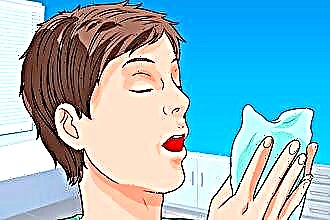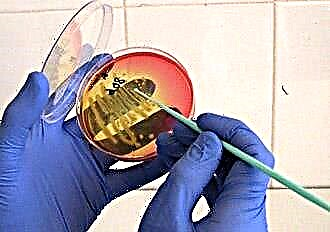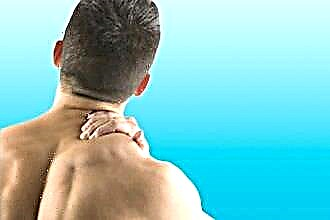It is not always possible for us to understand why there is a feeling of nasal congestion. Only with the appearance of concomitant symptoms can one guess about a possible disease. Usually the cause is a cold or allergy. In some cases, it is extremely difficult to figure it out on your own, so consultation with an otolaryngologist is required. Why is a stuffy nose, and how to avoid it?
Doctors identify many reasons and predisposing factors due to which the nose is clogged and nasal breathing is absent. Here are the main ones:
- sinusitis;
- allergy;
- unfavorable living conditions, hazardous production;
- colds, SARS;
- vasomotor rhinitis;
- narrowing of the nasal passages with polyps, foreign body, adenoids.

Now let's take a closer look at the causes of nasal congestion.
Sinusitis
Inflammation of the mucous membrane of the paranasal sinuses can proceed in an acute and sluggish form. The disease is often of infectious origin. There are several sinuses, which are air cavities. Most of the visits to the otolaryngologist are due to sinusitis; ethmoiditis and frontal sinusitis are diagnosed with a lesser frequency. As for the sphenoid sinus, inflammation is rare.
The development of sinusitis is predisposed by:
- congenital, traumatic defects of the nasopharynx and sinuses;
- hypertrophic rhinitis;
- frequent SARS;
- untreated hay fever;
- polyps, adenoids;
- smoking;
- diseases of the oral cavity, poorly performed dental procedures, after which the infection penetrates the maxillary sinuses;
- work with chemicals with a pungent odor.
The development of sinusitis is based on the increased production of secretions under the influence of an infectious factor. As the inflammatory process progresses, swelling of the nasal mucosa increases, which makes it difficult for mucus to drain from the paranasal sinuses.
The accumulation of secretion in the cavities is accompanied by an increase in its viscosity and active reproduction of microbes.
Symptom complex
The severity of symptoms depends on the cause of the nasal congestion. Clinical signs can be divided into general and local. First, let's list the common symptoms:
- weakness;
- malaise;
- decreased performance;
- hyperthermia, the level of which depends on the type of pathogenic pathogens. High fever occurs during an acute process. With chronicity of the disease, subfebrile condition is often recorded;
- decreased appetite;
- headache;
- restless sleep.
Local signs are presented:
- a clogged nose due to severe congestion;
- purulent discharge;
- difficult nasal breathing;
Note that at night, the outflow of viscous secretion is slightly facilitated, which makes breathing easier.
- nasalness;
- decreased sense of smell;
- pain in the paranasal area, which increases with bending. Painful sensations can spread to the temple area, jaw, forehead.
With bilateral sinusitis, the lacrimal canal is blocked, as a result of which lacrimation begins. Among the complications, it is worth highlighting meningitis, neuritis of the facial nerve, thrombotic consequences, osteomyelitis and brain abscess, which develops as a result of the spread of infection.
Allergy
 With an allergic reaction, there is usually profuse rhinorrhea and a stuffy nose. The reasons for the deterioration of the condition lie in the development of a specific response of the immune system to the action of a provoking factor. Among the possible allergens, we highlight:
With an allergic reaction, there is usually profuse rhinorrhea and a stuffy nose. The reasons for the deterioration of the condition lie in the development of a specific response of the immune system to the action of a provoking factor. Among the possible allergens, we highlight:
- dust mites, pollen, perfume, wool;
- household chemicals;
- cosmetical tools;
- food products (seafood, honey, dairy products, eggs, citrus fruits, chocolate);
- medications.
Symptoms
Depending on the strength of the allergen and the sensitivity of the immune system, the severity of symptoms may vary. The clinical picture of allergy is presented:
- frequent sneezing, as a result of irritation of the mucous membrane by a provoking factor;
- rhinorrhea (nasal discharge is clear, profuse, watery). Due to frequent friction of the nose, flaking and flushing may appear on the skin of the wings. Microcracks are the gateway for pathogenic pathogens;
- swelling of the nasal mucosa, which makes nasal breathing difficult. Edema can affect certain areas of the body (cheeks, eyelids, lips) or cover large areas of the skin (neck, chest);
A pronounced allergic reaction can manifest itself in the form of Quincke's edema and anaphylactic shock, which can be fatal without immediate treatment.
- skin rashes of various nature and size;
- cough. In some cases, the allergen can provoke an attack of suffocation against the background of bronchospasm;
- signs of conjunctivitis (hyperemia, swelling, redness of the eyes);
- itchy skin, eyes, nose;
- digestive dysfunction.
Allergy help
Given the severity of the disease and the condition of the person, the following can be used in treatment:
- antihistamines of local, systemic action;
- vasoconstrictor nasal sprays;
- hormonal drugs.
Severe allergies may require hospitalization. If the cause of the onset of allergic symptoms is seasonal hay fever, it is recommended to start taking medications two weeks before the beginning of flowering.
If drug therapy is ineffective, the question of carrying out specific hyposensitization may be considered.
Ambient conditions
The reasons why the nose does not breathe can be represented by poor living conditions. This applies to dry, hot and polluted air. The group of reasons also includes unfavorable production factors, when small particles of chemicals, building material, coal get into the air.
Paints and varnishes, metalworking, mining, machine-building, flour-grinding, grain processing and many other industries are considered harmful.
Colds, ARVI
Colds occupy a leading position among all respiratory pathologies. They are especially often diagnosed in the spring-autumn period, when there are sharp fluctuations in temperature and changes in the weather in general.
The development of the disease predisposes:
 hypothermia. If a person is in a damp room for a long time, in a draft or getting wet in the rain, the immune defense weakens and the risk of colds increases;
hypothermia. If a person is in a damp room for a long time, in a draft or getting wet in the rain, the immune defense weakens and the risk of colds increases;- chronic diseases of the ENT organs;
- immunodeficiency due to exacerbation of severe somatic pathology, systemic infectious disease or congenital malformations;
- long-term communication with a sick person in a room without ventilation. Viruses that are transmitted by sneezing, talking, settle on the nasopharyngeal mucosa, provoking the development of the disease.
Of the viral pathogens, rhinitis, adenoviruses, influenza virus, and MS infection can become the cause of the disease.
Vasomotor rhinitis
The development of the disease is due to a violation of the regulation of vascular tone under the influence of negative factors. This could be:
- severe stress. The release of hormones and changes in vascular tone can provoke the development of vasomotor rhinitis;
- anomalies in the structure of the nasopharynx;
- long-term therapeutic course with drugs that affect vascular tone. These drugs include nasal vasoconstrictor drops, some psychotropic and antihypertensive drugs;
- hormonal disorders. A change in the composition of hormones in the blood is observed during pregnancy, diseases of the endocrine system, in the climacteric period;
- improper nutrition.With the abuse of spicy, salty, spicy foods, the risk of vasomotor rhinitis increases.
Separately, the influence of vegetative-vascular dystonia should be highlighted. Violation of the regulation of vascular tone leads to the appearance of various symptoms. Among them, we note:
- dizziness;
- weather dependence. When weather conditions change, a person experiences severe weakness, dizziness, nausea, numbness of the limbs;
- headache;
- malaise;
- cardiopalmus;
- feeling of sinking heart;
- chills;
- increased sweating;
- cold extremities;
- stitching sensations in the cardiac region.
Clinical features
Vasomotor rhinitis has a chronic course, so the symptoms are not so pronounced:
 discomfort, slight burning sensation in the nasopharynx;
discomfort, slight burning sensation in the nasopharynx;- frequent sneezing;
- swelling of the mucous membrane of the nasal passages, which does not greatly impede nasal breathing, but does not make it possible to breathe deeply;
- small amount of mucous discharge;
- congestion in one nasal passage, which can change with a change in body position.
An exacerbation of the disease is observed after hypothermia, with prolonged inhalation of dusty air or against the background of immunodeficiency.
Accompanying illnesses
All diseases of this group reduce the patency of the nasal passages for air, due to which the mucous membrane becomes edematous, and the nose does not breathe well.
Polyps
Polyps and other benign formations in the nasopharynx can occur in single outgrowths or be located in groups. Depending on their volume, shape and consistency, the clinical symptoms are somewhat different. Among the clinical signs, we highlight:
- night snoring;
- nasalness;
- Difficulty nasal breathing;
- sneezing;
- runny nose.
Anomalies in the structure of the nasopharynx
Congenital defects, as well as traumatic changes in the structure of the nasal cavities, septa lead to impaired air permeability and ventilation in the paranasal sinuses. Swelling of the mucous membrane is accompanied by difficulty breathing through the nose.
Foreign body
Why is the nose not breathing? The penetration of a foreign body into the nasopharynx is accompanied by severe sneezing, discomfort and swelling of the mucous membrane. The severity of symptoms depends on the shape, size and density of the object. When the position of the body changes, the person's condition may worsen or improve (depending on the location of the foreign body).
When the object moves into the larynx and lower respiratory tract, bronchospasm and an attack of suffocation develop.
Adenoids
Lymphoid growths of the nasopharyngeal tonsil are most often recorded in childhood, but in some cases, adenoids are detected at an older age. They are an obstacle to the path of air, resulting in respiratory distress.
Preventive Tips
We figured out a little why a stuffy nose. Now we will consider preventive measures that will not allow the nasal passages to clog and disrupt breathing. They relate to living conditions, work, as well as strengthening immunity.
Ambient conditions
We spend most of our lives at work, so it is important to take care of our health and limit the negative impact of production factors. If we observe caution, safety rules, and also use protective equipment, the provoking factor has a lesser effect on the body.
As for the home environment, it is recommended to create a favorable microclimate:
- maintain humidity at 55-60%. It is especially important to monitor its level during the heating season, when the air conditioner is running, as well as when using heaters that dry the air. To maintain the optimum humidity level, it is advisable to use special devices - humidifiers. If there are none, you can hang wet linen on a heat source, put an aquarium or other container with liquid in the room, and also increase the number of plants, not forgetting to take care of them;
 reduce the temperature to 19 degrees;
reduce the temperature to 19 degrees;- regularly ventilate the room, which will reduce the concentration of dust, allergens, microbes. Access to fresh air makes it possible to saturate the internal organs with oxygen and facilitate breathing. Airing should be done twice a day for 10 minutes. In the summer season, it is recommended to do this early in the morning and late in the evening, when there is no heat. As for the winter period, there are no ventilation restrictions;
- carry out wet cleaning daily;
- get rid of unnecessary items in the room that accumulate dust (carpets).
Strengthening immunity
Our health largely depends on the level of immune defenses. To maintain it at a sufficient level, you must:
- eat properly. The diet should be supplemented with cereals, dairy products, fresh vegetables, herbs, fruits, fish. Restrictions apply to carbonated drinks, fatty, fried, spicy foods, foods with dyes, trans fats, semi-finished products, canned goods, muffins and sweets;
- drink at least 2 liters per day. Sufficient intake of liquid in the body allows to ensure the operation of each system, remove toxins, prevent dehydration and violations of the water-electrolyte balance. To do this, you can use non-carbonated alkaline water, unsweetened juice, compote, herbal tea or fruit drink;
- limit the impact of stress;
- devote enough time to sleep, rest;
- annually (preferably twice a year) to spend time on the seashore, in a forest area. A person becomes not only stronger, but also calm and balanced;
- consult a doctor in a timely manner if symptoms of the disease appear. Thanks to early diagnosis and initiation of therapy, it is possible to completely cure the patient and avoid complications;
- hardening. The procedures should be started when the person is absolutely healthy. At first, dousing with warm water is recommended, then its temperature should be reduced by 1 degree;
- devote time to sports activities. In the absence of time to visit sports clubs, you can do morning exercises;
- take regular walks in the fresh air, especially for people who have a "sedentary" job.
The listed recommendations allow you to maintain health for many years and breathe without difficulty.

 hypothermia. If a person is in a damp room for a long time, in a draft or getting wet in the rain, the immune defense weakens and the risk of colds increases;
hypothermia. If a person is in a damp room for a long time, in a draft or getting wet in the rain, the immune defense weakens and the risk of colds increases; discomfort, slight burning sensation in the nasopharynx;
discomfort, slight burning sensation in the nasopharynx; reduce the temperature to 19 degrees;
reduce the temperature to 19 degrees;

